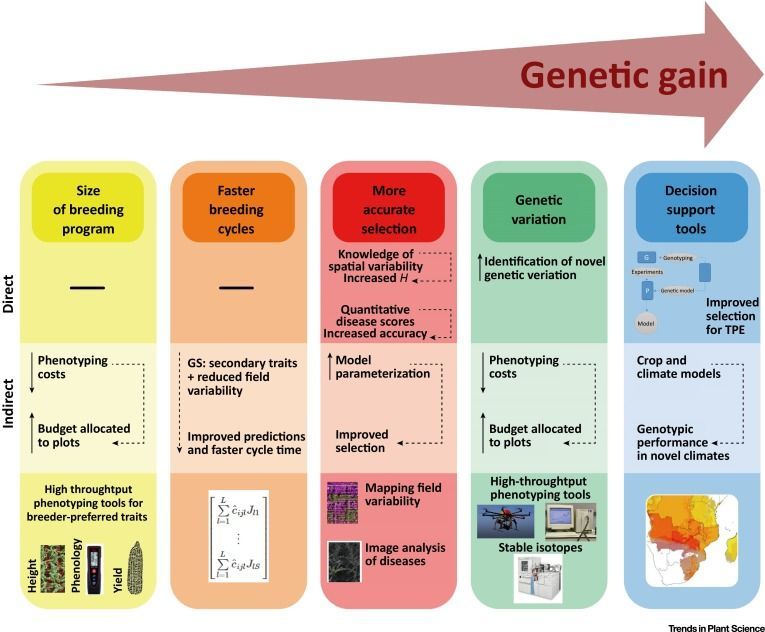Breeding trade-offs
On one side, it is obvious what we should do: increase any of the values in the numerator (selection intensity, accuracy and genetic variability) or reduce the denominator (how long it takes us to deliver gain). Any of those changes will increase genetic gain per year.
However, the world is full of trade-offs. First, that equation is for a single trait and our breeding programmes deal with multiple traits, so we are selecting on an index that combines the genetic information for all traits (their genetic variability, heritabilities, and correlations) with their relative economic value. Not all the traits have the same value for industry. And not all the traits cost the same to assess: measuring an external characteristic, say size, is a lot easier than measuring internal characteristics, say chemical composition.
Perhaps it is convenient to sacrifice accuracy, using a second- or third-best method for phenotyping, if we can assess more cheaply and quickly (increasing selection intensity). Perhaps it is convenient to clone our testing material (reducing effective population size), so we genotype once but test in multiple environments for multiple traits. Or we can redefine the traits, so we are not trying to predict a specific value but just check if we meet technical/quality thresholds.
There are many other options and that’s why the (more general version of the) breeder’s equation is central in what we do. It permits us to play with ideas, run alternatives and adapt our breeding programmes to whatever conditions we are facing. Sometimes it is super-duper high-throughput hyperspectral drone-enabled goodness. Sometimes is low-budget el-quicko back-of-a-workshop “appropriate” technology. Same equation, same decisions.
